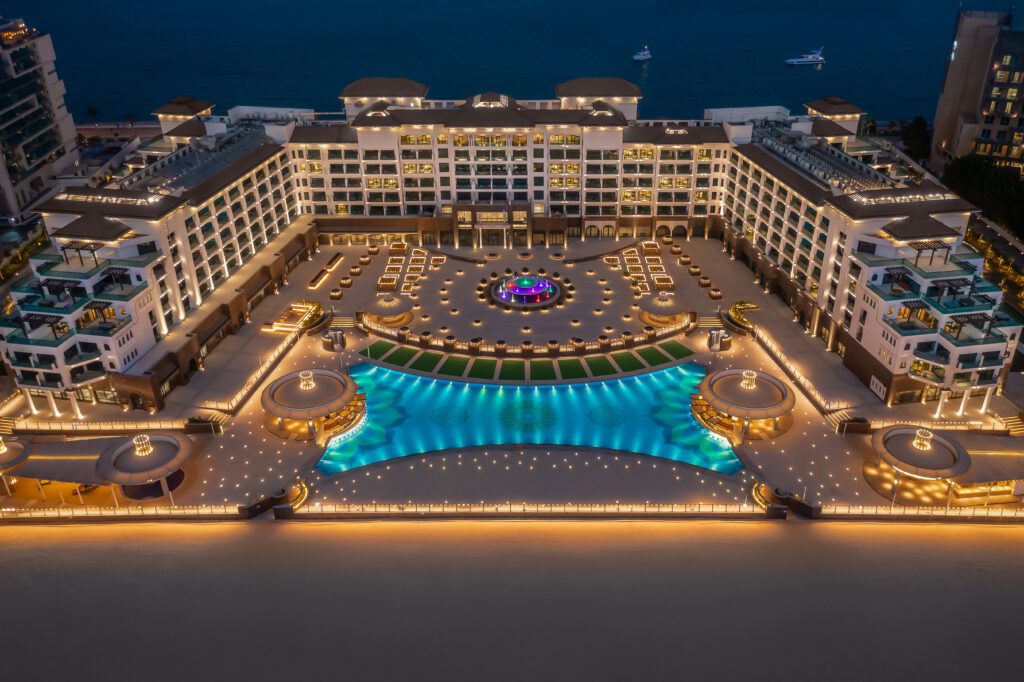
The Indian Hotels Company Limited (IHCL) said it aims to double its portfolio to over 700 hotels by 2030, and double its revenue to INR 150 billion.
International expansion of its Taj brand will drive a lot of the growth.
“On the international front, anything which is beyond 2 to 3 hours of flying distance, we don’t think we want to go with any other brand other than Taj,” said Puneet Chhatwal, managing director and CEO, during an investors meeting.
“Taj is the brand with which we want to grow, and we will go to markets, which are relevant for us, like Singapore or Thailand in Southeast Asia or Switzerland in Europe or another hotel in London or another one in markets like Birmingham, where the Indian diaspora is very strong,” he said.
Taj properties are opening up in Bhutan’s Phobjikha and Paro valleys in the next 12 months, and one in Frankfurt is also on the way.
“And in the following year, we are hoping to open at least one more property in the Middle East. Whether it will be Saudi Arabia or Bahrain or another one in Dubai, that time will tell.”
Chahtawal also hinted at a hotel in Dhaka in the pipeline.
A ‘Capital-Light’ Approach with Strategic Leases
IHCL’s international strategy is defined by its “capital-light” model, which according to Chhatwal helps reduce financial risks. Unlike its earlier days of asset-heavy acquisitions, the company now emphasizes management contracts and operating leases.
For instance, the Taj Frankfurt would operate under lease. This approach allows IHCL to grow in high-demand markets without the burden of ownership, ensuring sustained profitability even in competitive environments.
“When it comes to Southeast Asia, if there is a compelling opportunity, we might consider an exception as that is a really important market for Indian travelers, whether for business or leisure,” he said.
The IHCL brand currently has a portfolio that’s 60% capital light and 40% capital heavy, Chhatwal said. “This could end up in the next 5 or 7 years, at 30%-70%; or 25%-75% or 35%-65%.”
The Indian Diaspora Angle
The Indian diaspora is also a factor in IHCL’s expansion strategy. The company said it is targeting cities like London, Birmingham, and Singapore, where strong Indian communities guarantee a steady flow of guests.
“We’ll make sure that we don’t lose out on opportunities in key international markets,” Chhatwal said.
In London, occupancy rates exceeds 85% at IHCL’s St. James Court and Taj 51 Buckingham Gate Suites and Residences. IHCL is eyeing a third property in London to cater to increasing demand.
“Having another hotel in London for us is a no brainer,” Chhatwal said.
The Oberoi Group has also announced a hotel in London slated for a 2028 opening.
Domestic Expansion
While Taj leads the charge internationally, IHCL’s other brands – Vivanta, Gateway, Ginger, SeleQtions and Tree of Life – would fuel the company’s expansion within the country. Chhatwal said IHCL has tailored each of these brands to meet market needs across demographics.
Reflective of the emerging consumer trends as well as the growth in Tier 1 and 2 cities, boutique leisure offering Tree of Life, the re-imagined Gateway brand in the upscale segment and Ginger in the midscale segment would drive 75% of IHCL’s new additions.
“Nearly 60-65% of new hotel supply is coming to Tier 2 and Tier 3 cities,” Chhatwal said. He added that IHCL plans to open more management hotels in these markets, tapping into demand currently served by unbranded options.
“Many cities, even state capitals, lack quality branded hotels, as a result travelers choose unbranded alternatives,” he noted. The shift from unbranded to branded properties is already underway and will accelerate as more branded chains expand into these underserved regions.
Accommodations Sector Stock Index Performance Year-to-Date
What am I looking at? The performance of hotels and short-term rental sector stocks within the ST200. The index includes companies publicly traded across global markets, including international and regional hotel brands, hotel REITs, hotel management companies, alternative accommodations, and timeshares.
The Skift Travel 200 (ST200) combines the financial performance of nearly 200 travel companies worth more than a trillion dollars into a single number. See more hotels and short-term rental financial sector performance.
Read the full methodology behind the Skift Travel 200.

